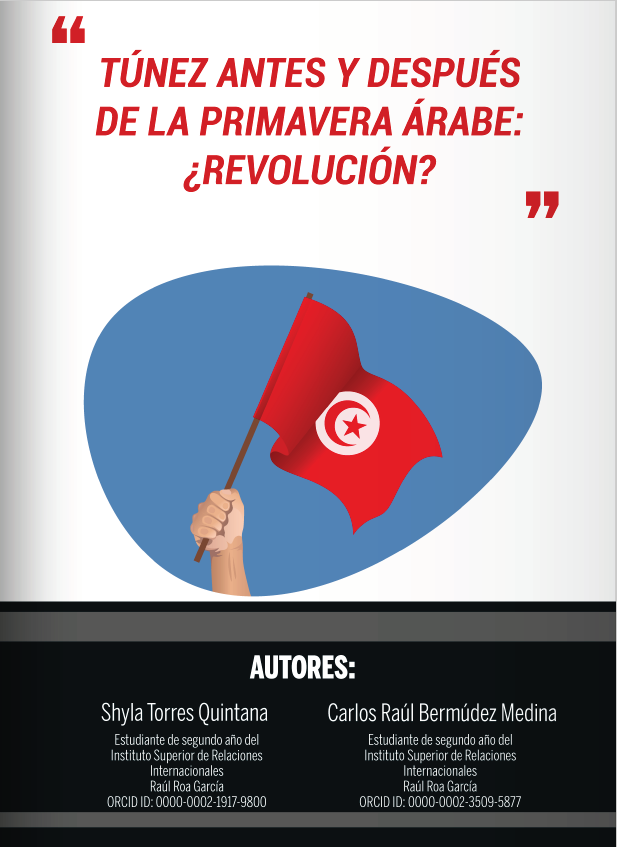Tunisia before and after the Arab Spring: Revolution?
Keywords:
Tunisia, Middle East, Arab spring, crisisAbstract
Between 2010 and 2012, numerous demonstrations and riots popularly known as the "Arab Spring" took place in the North African and Middle East regions. The immolation of the Tunisian Mohamed Bouazizi in the city of Sidi Bouzid is considered the triggering element of the popular protests. The flight of the then president, Zine El Abidine Ben Ali, gave way to a new political stage in the Tunisian Republic. Since then, the country has faced a deep multidimensional crisis and, despite the claims of the West, the Arab Spring has not been able to put an end to the problems of this North African country; on the contrary, it has brought new and more pressing concerns to Tunisians.
Downloads
References
Afrique, J. (2013). Bourguiba et la modernité.
Bauzà Rosselló, M. (2021). La primavera árabe y su efecto en el turismo de Túnez. Illes Balears.
Claus, P., & Salaberry, J. I. (2019). Resistencias sociales frente al neoliberalismo y los nuevos préstamos del FMI: el caso de Túnez.
Gozzi, G. (2020). Democracia y constitucionalismo tras las primaveras árabes: el caso de Túnez. Quaderns de la Mediterrània, pp. 251-257.
Hernández Pérez, D. (2020). La primavera árabe diez años después: consecuencias políticas y sociales en el mundo árabe. Sevilla.
swissinfo.ch. (2022, diciembre 26). Túnez prevé una inflación del 10.5% en 2023 frente al 9.8% actual.
Pallarés Barberá, D. (2013). Breve historia política del Túnez Contemporáneo.
UNdata. (2010). Record View Per Capita GDP at Current Prices United Nations.

Downloads
Published
How to Cite
Issue
Section
License
Copyright (c) 2023 Revista Científica Universitaria Ad Hoc

This work is licensed under a Creative Commons Attribution-NonCommercial 4.0 International License.











